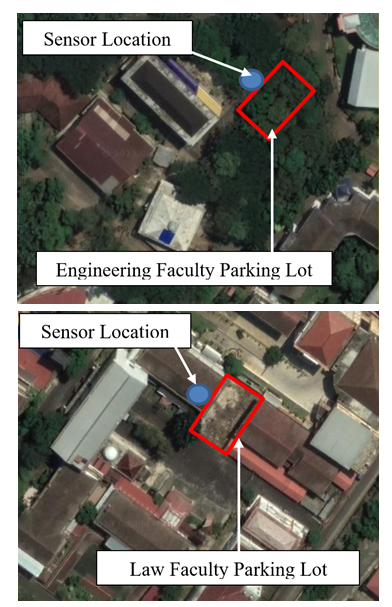Analysis of PM2.5 Level Related to Vehicle Activities in Campus Parking Lot
Abstract
The number of vehicle usage, especially motorcycles, in Indonesia has significantly increased in the past 10 years, particularly among young people. This has had an impact on the declining air quality in public places, including on campus grounds. PM2.5, as one of the hazardous pollutants to health, needs to be given special attention regarding its dispersion concentration in areas heavily frequented by the public, such as parking lots on campus. This study analyzes the level of PM2.5 concentration in the campus parking lots at Universitas Lampung, with the aim of observing the pattern of PM2.5 pollution in the campus area, considering the increasing number of motorcycles entering the campus every year. The measurement of PM2.5 levels was conducted using a light scattering sensor in two parking lots with different microenvironments, and then its correlation with motorcycle activities at each location was analyzed using simple regression. Based on statistical analysis, it was found that the differences in microenvironments affect PM2.5 levels significantly. The number of motorcycle activities also has a positive correlation with the level of PM2.5, where the average PM2.5 concentration recorded has exceeded the threshold set by the government, which is 15 µg/m3 per day. However, the effect of the microenvironment in this study is stronger than the number of vehicles. Therefore, in the future, appropriate policies and strategies are needed to reduce PM2.5 concentrations in public areas, especially on campuses, to prevent the associated risks of the pollution.




















